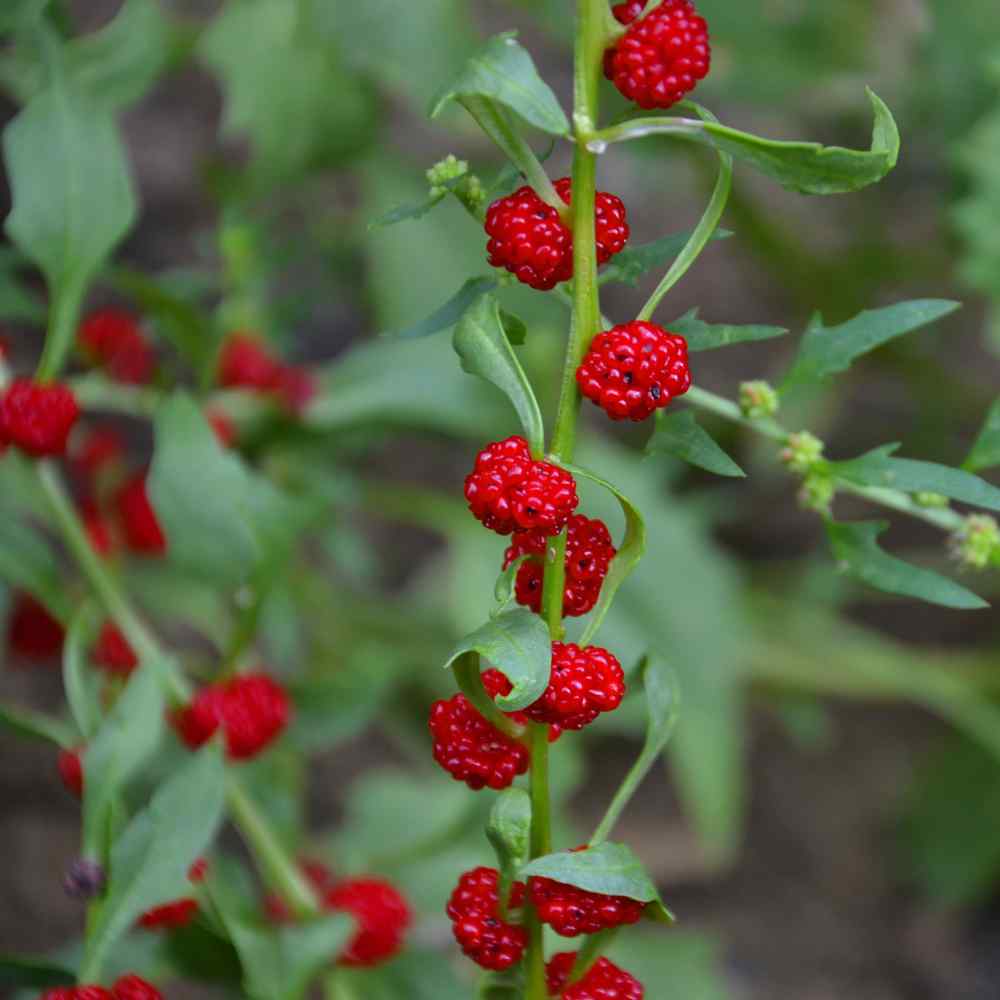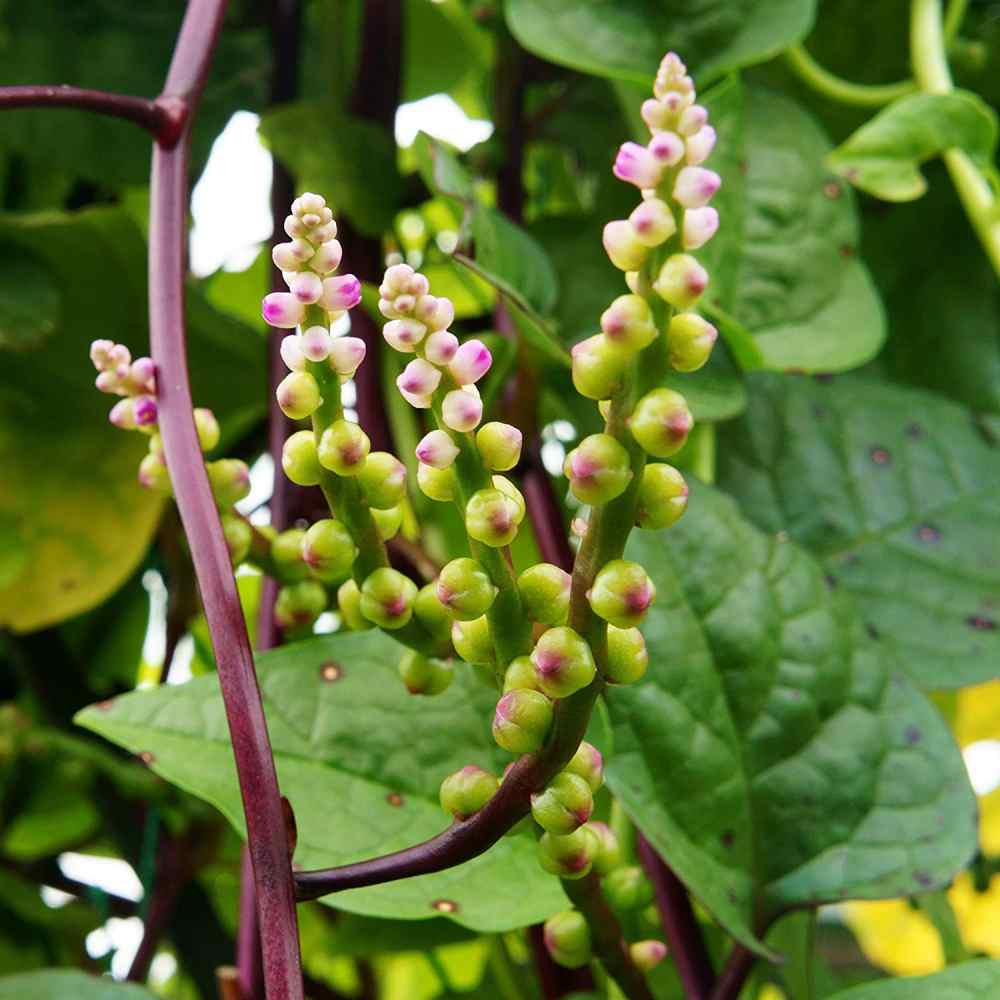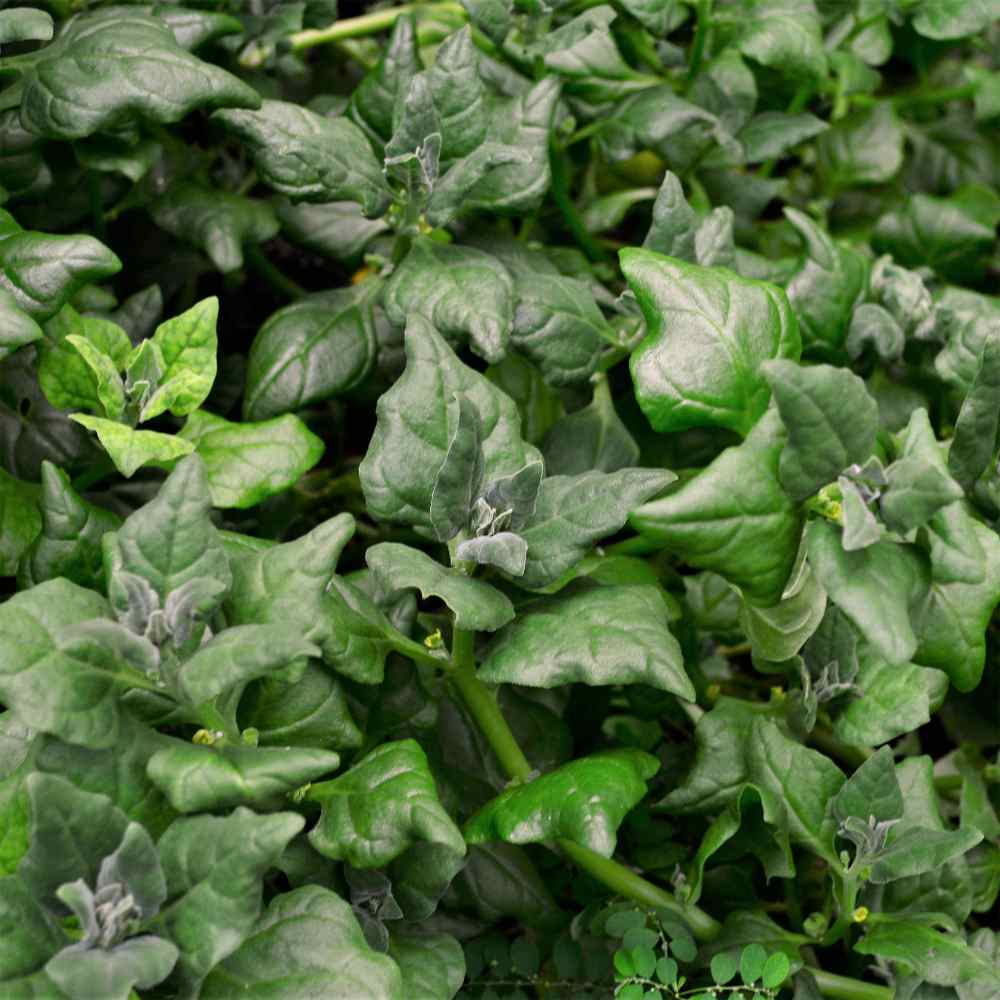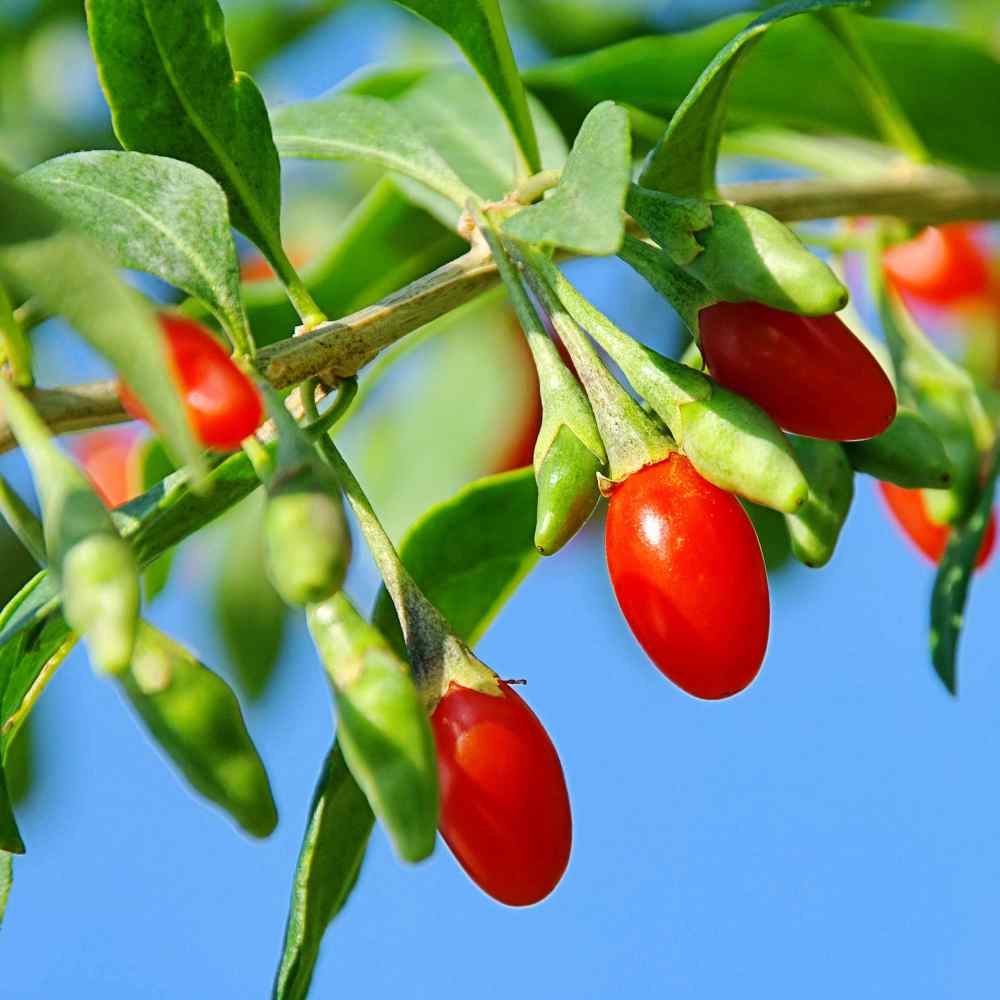
Strawberry Spinach Planting and Care Guide
Quick Facts About Strawberry Spinach
Chenopodium, commonly known as Strawberry Spinach, is an annual herb that is grown for appearance, as well as its edible leaves and fruit. Its berries are bright red, and they can be incorporated in all manner of dishes.
Planting Time
Strawberry Spinach can be planted directly outdoors after the last frost, or started indoors 6-8 weeks before the last expected frost.

Planting Location
Strawberry Spinach should be planted in an area of full sun or partial shade with average, well-draining soil.
How to Plant Strawberry Spinach
- If starting indoors, sow seeds into trays or small pots 6-8 weeks before the last expected frost. Use a good seed-starter mix for soil.
- If sowing outdoors, prepare a seedbed by weeding and breaking up soil. Add organic matter if soil is poor.
- Sow 3-5 seeds per plant at a depth of 1/8 inch and barely cover with soil.
- Keep seeds moist and maintain a temperature of 65F-75F degrees until germination. Under proper conditions, germination should occur in 1-3 weeks.
- Once seedlings have their first sets of true leaves, thin to strongest seedling and plant 12-18 inches apart in the garden.
- Before transplanting seedlings into the garden, it's essential to "harden them off". This involves acclimating young plants to outdoor conditions by placing them in a sheltered outdoor area for about a week. Initially, shield them from strong winds and direct sunlight. If there's a risk of frost overnight, either cover the plants or bring them indoors, then return them outside in the morning. This hardening off method helps strengthen the plant's cell structure, minimizing transplant shock and sun damage.

Care And Maintenance
- Keep weeds under control during the growing season. Weeds compete with plants for water, space and nutrients, so control them by either cultivating often or use a mulch to prevent their seeds from germinating.
- Mulches play a vital role in preserving soil moisture and ensuring consistent soil temperatures. When it comes to annuals, using organic mulch made from shredded leaves not only enhances the appearance of the bed but also enriches the soil as it decomposes over time. Remember to keep mulch away from the plant stems to avoid potential rot issues.
- Water regularly to keep soil moist, but not soggy. This will encourage healthier, more palatable growth. Avoid watering leaves to prevent fungal disease.
- If soil quality is poor, apply a balanced, slow-release fertilizer at the time of planting, and a liquid fertilizer while plants are flowering.
- This plant's leaves can be cooked and eaten like spinach. Harvest outer leaves when they are large enough to eat, but leave a few on the plant for continued growth. The berries are ready to harvest when they turn red, and can be snipped or twisted from their stems.
- Deadhead young berries to prevent self-sowing, or allow them to mature and fall if you want new plants.




































